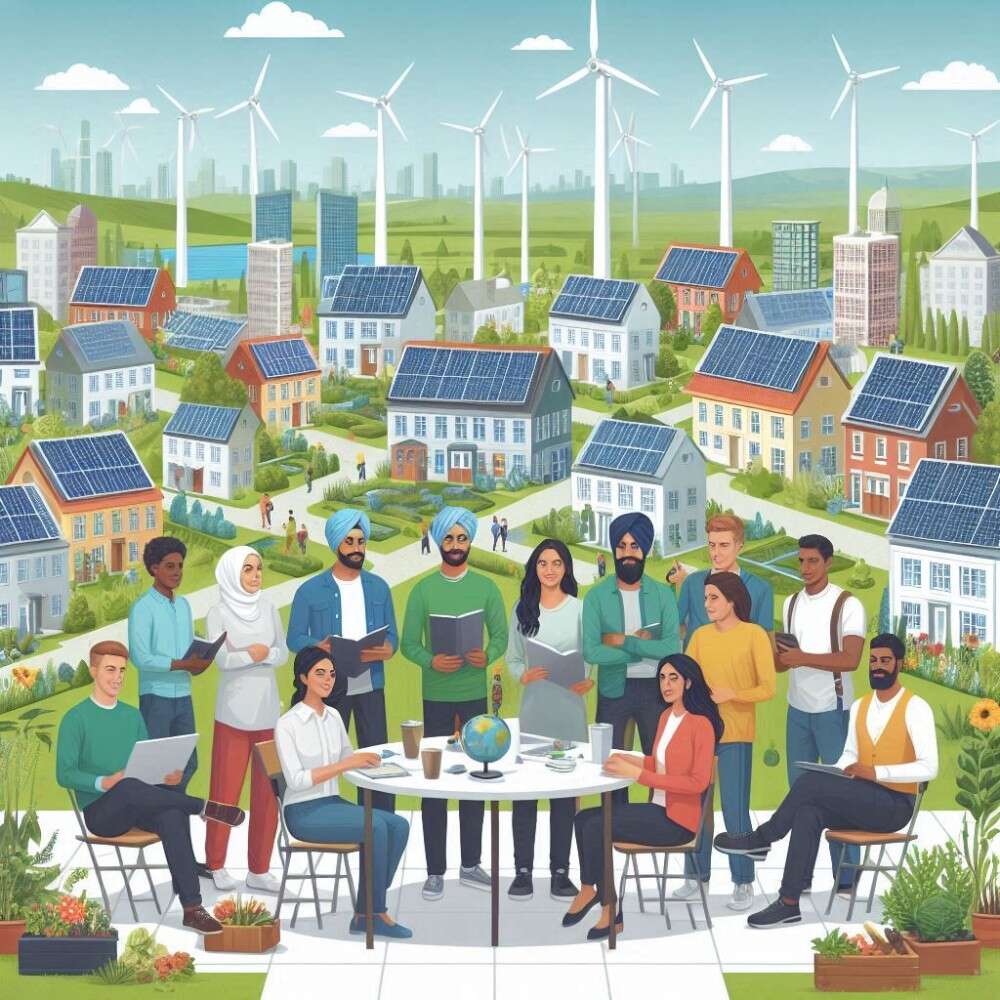Basic Concepts of Sustainable Development
Sustainable development is a multidimensional concept aiming to balance economic growth, environmental protection, and social equity. Coined in the Brundtland Report (1987), it is defined as “development that meets the needs of the present without compromising the ability of future generations to meet their own needs.” This approach underscores the importance of integrating three core pillars: economic viability, environmental sustainability, and social inclusiveness.
- Economic Viability: This pillar emphasizes the necessity of economic systems that support long-term growth and resilience. It involves creating jobs, fostering innovation, and promoting industries that contribute to a stable and prosperous economy.
- Environmental Sustainability: This aspect focuses on protecting natural resources and ecosystems. It entails responsible resource management, reducing pollution, and mitigating climate change impacts to preserve the environment for future generations.
- Social Inclusiveness: Sustainable development aims to ensure equitable access to resources and opportunities. It involves addressing poverty, improving education and healthcare, and fostering social justice.
Challenges and Opportunities in Sustainable Development
Challenges:
- Resource Depletion: Overexploitation of natural resources such as water, minerals, and forests threatens ecological balance and future resource availability.
- Climate Change: Rising temperatures, extreme weather events, and sea-level rise pose significant risks to ecosystems, economies, and communities.
- Inequality: Socioeconomic disparities hinder sustainable development efforts, as marginalized communities often lack access to essential services and opportunities.
- Policy Integration: Aligning policies across various sectors and levels of governance to achieve cohesive sustainable development goals can be complex.
Opportunities:
- Renewable Energy: Investing in solar, wind, and other renewable energy sources reduces dependence on fossil fuels, decreases greenhouse gas emissions, and creates green jobs.
- Circular Economy: Promoting reuse, recycling, and waste reduction can minimize environmental impact and foster economic efficiency.
- Technological Innovation: Advances in technology can drive sustainable practices, from precision agriculture to smart cities.
- International Collaboration: Global partnerships and agreements, such as the Paris Agreement, facilitate coordinated efforts to address climate change and promote sustainable development.
Feedback Loops in Complex Systems
Feedback loops are fundamental to understanding the dynamics of complex systems, such as the Earth’s climate system. In system dynamics, feedback loops can be either reinforcing (positive) or balancing (negative).
- Reinforcing Feedback Loops: These loops amplify changes within a system. For example, the melting of polar ice reduces the Earth’s albedo (reflectivity), causing more solar energy to be absorbed by the Earth’s surface, leading to further warming and more ice melt. This loop exacerbates climate change.
- Balancing Feedback Loops: These loops counteract changes, promoting stability. An example is the carbon cycle’s role in regulating atmospheric CO2. Increased CO2 levels enhance plant growth (carbon sequestration), which in turn reduces CO2 concentrations, stabilizing the climate system.
Earth’s Climate System and Climate Change Challenges
The Earth’s climate system is a complex interplay of the atmosphere, hydrosphere, cryosphere, lithosphere, and biosphere. Solar radiation drives the system, with energy being absorbed, reflected, and emitted in various forms. Greenhouse gases, such as CO2, methane, and nitrous oxide, trap heat in the atmosphere, creating the greenhouse effect that warms the planet.
Challenges of Climate Change:
- Temperature Rise: Global warming leads to heatwaves, altered weather patterns, and increased evaporation rates, impacting agriculture, water supply, and human health.
- Sea-Level Rise: Melting glaciers and thermal expansion of seawater contribute to rising sea levels, threatening coastal communities and ecosystems.
- Extreme Weather Events: Increased frequency and intensity of hurricanes, floods, and droughts result in significant economic and human costs.
- Ecosystem Disruption: Shifts in temperature and precipitation patterns affect biodiversity, leading to habitat loss and species extinction.
Scenarios of Climate Change:
- Business-as-Usual: Continuation of current emission trends leading to severe climate impacts, including significant temperature increases and widespread ecological disruption.
- Mitigation Pathways: Implementing robust climate policies to reduce emissions, transition to renewable energy, and enhance carbon sinks, resulting in stabilized or reduced temperature rise.
- Adaptation Strategies: Developing infrastructure, policies, and practices to cope with the impacts of climate change, such as building resilient cities and promoting sustainable agriculture.
Paradigms of Thought on Sustainability
Different paradigms of thought influence how people perceive and address sustainability issues:
- Technocentric Paradigm: Emphasizes technological solutions and economic growth as primary means to achieve sustainability. Advocates believe innovation and market mechanisms can resolve environmental problems.
- Ecocentric Paradigm: Prioritizes ecological balance and intrinsic value of nature over human-centered benefits. This view advocates for preserving natural systems and reducing human impact.
- Anthropocentric Paradigm: Focuses on human welfare and development as the main goals, considering the environment mainly as a resource for human use. This perspective often emphasizes short-term economic gains.
Sustainability Vocabulary and Associated Facts
- Carbon Footprint: The total amount of greenhouse gases emitted by an individual, organization, or product. Reducing carbon footprints is essential for mitigating climate change.
- Renewable Energy: Energy derived from natural processes that are replenished constantly, such as solar, wind, and hydropower. Transitioning to renewable energy is crucial for sustainable development.
- Biodiversity: The variety of life in all its forms and interactions. Protecting biodiversity ensures ecosystem resilience and stability.
- Sustainable Agriculture: Farming practices that meet current food needs without compromising future generations’ ability to produce food. This includes crop rotation, organic farming, and water-efficient irrigation.
Feedback Mechanisms in the Earth’s Climate System
- Ice-Albedo Feedback: As ice melts, the Earth’s surface becomes less reflective (lower albedo), absorbing more solar energy and accelerating warming and further ice melt.
- Water Vapor Feedback: Warming increases evaporation, raising atmospheric water vapor levels, which enhances the greenhouse effect and leads to further warming.
- Carbon Cycle Feedback: Higher temperatures can reduce the capacity of oceans and forests to absorb CO2, leading to higher atmospheric CO2 levels and more warming.
- Cloud Feedback: Changes in cloud cover can either amplify (positive feedback) or dampen (negative feedback) warming, depending on cloud type and altitude.
Conclusion
Sustainable development and climate change are intricately linked and present both significant challenges and opportunities. Understanding the complexities of feedback loops, the Earth’s climate system, and differing paradigms of thought is crucial for developing effective strategies. By leveraging technological innovation, promoting renewable energy, and fostering international collaboration, we can navigate these challenges and work towards a sustainable future. Embracing sustainable development principles ensures that economic growth, environmental protection, and social equity go hand in hand, securing a prosperous and resilient world for generations to come.













